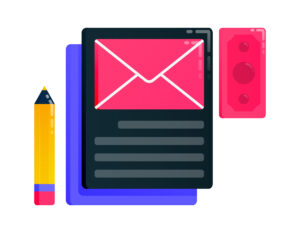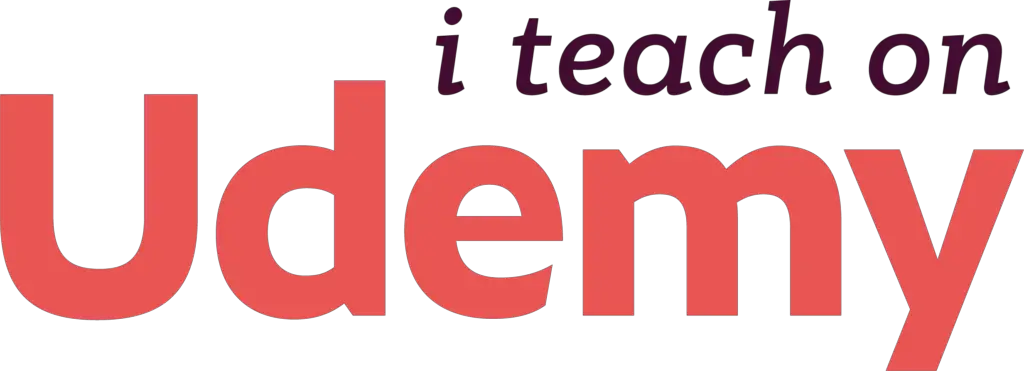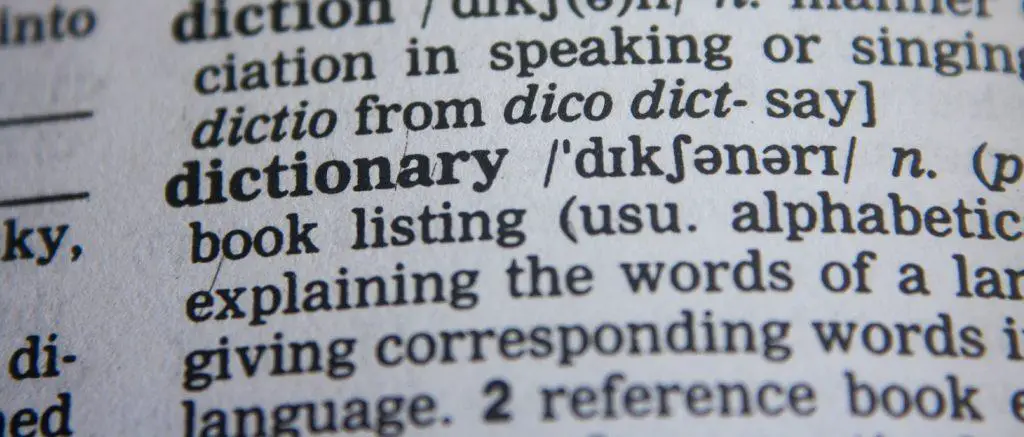How to Write a Perfect Email for the English Exam
Writing an effective email is a crucial skill for the English exam. It really doesn’t matter which English exam you’re doing, whether IELTS, TOEFL, TOEIC tests or any of the Cambridge English exams, there will almost certainly a part that involves writing an email or letter.
To help you crush this part of the exam, I’ve created a comprehensive checklist to ensure your email is clear, well-structured and meets all the requirements.
Understanding the Basics
 Before diving into the details, let’s start with the basics.
Before diving into the details, let’s start with the basics.
You will be given a task, a word count and a time limit. For example, in the IELTS General Training Writing Task 1, you are required to write at least 150 words in about 20 minutes. The task usually involves writing an email or letter based on a given situation. This can be formal, semi-formal or informal, depending on the scenario.
Detailed Checklist for Writing an Email
Carefully Read the Question
This might seem obvious but it’s vital to read and understand the question before picking up your pen.
If you get this wrong, you could find yourself at the wrong end of the transaction, complaining about a delay rather than explaining the delay to the customer.
You will have scrap paper available, so make use of that to make notes for yourself. This scrap paper isn’t taken into account for your score but will need to be handed in at the end. In other words, you aren’t allowed to take it with you when you leave.
Recipient and Relationship
- Who am I writing to? Is the recipient a friend, family member, colleague, customer, supplier, customer service representative or someone else.
- What is my relationship with the recipient? Determine how well you know the person. Are they a close friend, acquaintance or professional contact? Am I the customer or the supplier (if applicable to the question)? Understanding the nature of your relationship will help you set the tone for your email (casual, formal, business-related).
Purpose and Content
- What is the main purpose of the email? Is it to inform, request, complain, invite, apologise or something else.
- Are there any specific points or questions that need to be addressed? Ensure you provide information, ask questions or clarify something.
- What action or response do I want from the recipient? Be clear if you need a reply, action, confirmation or simply acknowledgment.
Tone and Style
- What tone should I use? Decide if the email should be friendly, professional, apologetic or enthusiastic.
- Should the language be formal, semi-formal, or informal? Match the level of formality to the recipient and the situation.
Introduction
- How should I introduce myself or the subject of the email? Choose to start with a greeting, self-introduction or a reference to previous communication. You will usually tell the reader why you’re writing to them.
- Do I need to provide any background information or context? Ensure the recipient has the information needed to understand the purpose of your email.
Body Content
- What are the main points I need to cover? Identify essential details for the recipient to know.
- Do I need to provide details, explanations or examples? Elaborate on certain points to ensure clarity.
- Have I organised my points logically and clearly? Present the information in a structured and easy-to-follow manner.
Conclusion
- What closing remarks should I include? Express gratitude, excitement or anticipation.
Closing and Sign-off
- What is the appropriate way to sign off based on the formality of the email? Choose an appropriate closing such as “Yours faithfully”, “Yours sincerely”, “Best regards”, “Best wishes” or “Cheers”.
Proofreading
This is a very important part.
If you’ve finished your email, this is not the end of your task. This is not the time to sit back and relax. Use the time left to check your work.
- Have I checked for spelling and grammar errors? Ensure there are no spelling mistakes or grammatical mistakes. If, for example, you know that you are a little careless about articles, check these specifically.
- Have I ensured that the email is within the required word count? Make sure the email is concise but comprehensive.
- Is the email clear and concise? Confirm that the message is easy to understand without unnecessary information.
Example Answer 1
To illustrate how this checklist can be applied, let’s look at an example prompt:
Prompt: You recently attended a job interview but have not received a response. Write an email to the interviewer asking about the status of your application. In your email:
- Remind them of the date of the interview.
- Mention the position you applied for.
- Ask when you can expect a decision.
Applying the Checklist
- Recipient and Relationship:
- Who am I writing to? The interviewer or hiring manager.
- What is my relationship with the recipient? Professional; I am a job applicant.
- Purpose and Content:
- What is the main purpose of the email? To inquire about the status of my job application.
- What specific information do I need to include? Date of the interview, the position applied for.
- Are there any specific points or questions that need to be addressed? Yes, when I can expect a decision.
- What action or response do I want from the recipient? A reply with the status of my application.
- Tone and Style:
- What tone should I use? Polite and professional.
- Should the language be formal, semi-formal, or informal? Formal.
- Introduction:
- How should I introduce myself or the subject of the email? Refer to the interview and the position applied for.
- Do I need to provide any background information or context? Yes, mention the date of the interview.
- Body Content:
- What are the main points I need to cover? Date of the interview, the position, asking about the decision.
- Do I need to provide details, explanations or examples? Provide the date of the interview and the job title.
- Have I organised my points logically and clearly? Yes, each point in a separate paragraph.
- Conclusion:
- What closing remarks should I include? Express appreciation for their time and consideration.
- Closing and Sign-off:
- What is the appropriate way to sign off based on the formality of the email? “Yours sincerely”
- Do I need to include any additional contact information or next steps? Mention willingness to provide more information if needed.
- Proofreading:
- Have I checked for spelling and grammar errors? Yes.
- Have I ensured that the email is within the required word count? Yes.
- Is the email clear and concise? Yes.
Example Email Answer 1
Dear Mr Brown,
I am writing to follow up on the status of my application for the Marketing Manager position at XYZ Corporation. I had the pleasure of interviewing with you on June 15th, and I am very excited about the opportunity to join your team.
During the interview, we discussed various aspects of the role and how my background in digital marketing and project management aligns with the company’s goals. I remain very enthusiastic about the potential to contribute to your team and help drive the company’s marketing initiatives forward.
Could you kindly update me on the status of my application? I would like to know when I can expect to hear a decision regarding the next steps. If you require any additional information or documentation from my side, please do not hesitate to let me know.
Thank you very much for your time and consideration. I look forward to your response.
Yours sincerely,
[Your Full Name]
Example Answer 2
Here’s another example, this time an informal email.
Prompt: You have recently moved to a new city. Write an email to a friend explaining the move. In your email:
- Describe the new city.
- Explain why you moved.
- Invite your friend to visit.
Applying the Checklist
- Recipient and Relationship:
- Who am I writing to? My friend, Jane.
- What is my relationship with the recipient? Informal; we are close friends.
- Purpose and Content:
- What is the main purpose of the email? To inform Jane about my move and invite her to visit.
- What specific information do I need to include? Description of San Francisco, reasons for the move, invitation to visit.
- Are there any specific points or questions that need to be addressed? Details about the new city and reasons for moving.
- What action or response do I want from the recipient? I want Jane to visit me.
- Tone and Style:
- What tone should I use? Friendly and enthusiastic.
- Should the language be formal, semi-formal or informal? Informal.
- Introduction:
- How should I introduce myself or the subject of the email? Briefly mention that I’ve moved to a new city.
- Do I need to provide any background information or context? Yes, mention the move and why it happened.
- Body Content:
- What are the main points I need to cover? Description of the new city, reasons for the move, invitation to visit.
- Do I need to provide details, explanations or examples? Yes, details about the city and reasons for moving.
- Have I organised my points logically and clearly? Yes, in separate paragraphs.
- Conclusion:
- What closing remarks should I include? Looking forward to seeing Jane soon.
- Closing and Sign-off:
- What is the appropriate way to sign off based on the formality of the email? Informal sign-off, such as “Best wishes”.
- Do I need to include any additional contact information or next steps? Perhaps suggest dates or ways to plan the visit.
- Proofreading:
- Have I checked for spelling and grammar errors? Yes.
- Have I ensured that the email is within the required word count? Yes.
- Is the email clear and concise? Yes.
Example Email Answer 2
Dear Jane,
I hope you’re doing well! I have some exciting news to share – I’ve recently moved to a new city! After months of planning and anticipation, I finally made the move to San Francisco.
San Francisco is an incredible city with so much to offer. The weather is fantastic, and there are so many interesting neighborhoods to explore. From the historic charm of Fisherman’s Wharf to the vibrant culture of the Mission District, there’s always something to do. The food scene here is amazing too – I’ve already discovered some great restaurants and cafes that I can’t wait to show you.
The main reason for my move was a new job opportunity. I was offered a position at a tech startup here, and it was too good to pass up. The team is fantastic, and I’m really enjoying the new challenges and experiences that come with the job.
I would love for you to come and visit me soon. It would be great to catch up and show you around my new city. Let me know when you’re free, and we can plan something. I have a cosy guest room ready for you, and we could have so much fun exploring together.
Looking forward to seeing you soon!
Best wishes,
[Your Name]
Writing Test Email Summary
By following this detailed checklist, you can ensure your email is well-organised, meets the expectations of the examiners and effectively communicates your message.
Good luck with your exam preparation!


